2.5: Chapter 3
- Page ID
- 47751
\( \newcommand{\vecs}[1]{\overset { \scriptstyle \rightharpoonup} {\mathbf{#1}} } \)
\( \newcommand{\vecd}[1]{\overset{-\!-\!\rightharpoonup}{\vphantom{a}\smash {#1}}} \)
\( \newcommand{\id}{\mathrm{id}}\) \( \newcommand{\Span}{\mathrm{span}}\)
( \newcommand{\kernel}{\mathrm{null}\,}\) \( \newcommand{\range}{\mathrm{range}\,}\)
\( \newcommand{\RealPart}{\mathrm{Re}}\) \( \newcommand{\ImaginaryPart}{\mathrm{Im}}\)
\( \newcommand{\Argument}{\mathrm{Arg}}\) \( \newcommand{\norm}[1]{\| #1 \|}\)
\( \newcommand{\inner}[2]{\langle #1, #2 \rangle}\)
\( \newcommand{\Span}{\mathrm{span}}\)
\( \newcommand{\id}{\mathrm{id}}\)
\( \newcommand{\Span}{\mathrm{span}}\)
\( \newcommand{\kernel}{\mathrm{null}\,}\)
\( \newcommand{\range}{\mathrm{range}\,}\)
\( \newcommand{\RealPart}{\mathrm{Re}}\)
\( \newcommand{\ImaginaryPart}{\mathrm{Im}}\)
\( \newcommand{\Argument}{\mathrm{Arg}}\)
\( \newcommand{\norm}[1]{\| #1 \|}\)
\( \newcommand{\inner}[2]{\langle #1, #2 \rangle}\)
\( \newcommand{\Span}{\mathrm{span}}\) \( \newcommand{\AA}{\unicode[.8,0]{x212B}}\)
\( \newcommand{\vectorA}[1]{\vec{#1}} % arrow\)
\( \newcommand{\vectorAt}[1]{\vec{\text{#1}}} % arrow\)
\( \newcommand{\vectorB}[1]{\overset { \scriptstyle \rightharpoonup} {\mathbf{#1}} } \)
\( \newcommand{\vectorC}[1]{\textbf{#1}} \)
\( \newcommand{\vectorD}[1]{\overrightarrow{#1}} \)
\( \newcommand{\vectorDt}[1]{\overrightarrow{\text{#1}}} \)
\( \newcommand{\vectE}[1]{\overset{-\!-\!\rightharpoonup}{\vphantom{a}\smash{\mathbf {#1}}}} \)
\( \newcommand{\vecs}[1]{\overset { \scriptstyle \rightharpoonup} {\mathbf{#1}} } \)
\( \newcommand{\vecd}[1]{\overset{-\!-\!\rightharpoonup}{\vphantom{a}\smash {#1}}} \)
\(\newcommand{\avec}{\mathbf a}\) \(\newcommand{\bvec}{\mathbf b}\) \(\newcommand{\cvec}{\mathbf c}\) \(\newcommand{\dvec}{\mathbf d}\) \(\newcommand{\dtil}{\widetilde{\mathbf d}}\) \(\newcommand{\evec}{\mathbf e}\) \(\newcommand{\fvec}{\mathbf f}\) \(\newcommand{\nvec}{\mathbf n}\) \(\newcommand{\pvec}{\mathbf p}\) \(\newcommand{\qvec}{\mathbf q}\) \(\newcommand{\svec}{\mathbf s}\) \(\newcommand{\tvec}{\mathbf t}\) \(\newcommand{\uvec}{\mathbf u}\) \(\newcommand{\vvec}{\mathbf v}\) \(\newcommand{\wvec}{\mathbf w}\) \(\newcommand{\xvec}{\mathbf x}\) \(\newcommand{\yvec}{\mathbf y}\) \(\newcommand{\zvec}{\mathbf z}\) \(\newcommand{\rvec}{\mathbf r}\) \(\newcommand{\mvec}{\mathbf m}\) \(\newcommand{\zerovec}{\mathbf 0}\) \(\newcommand{\onevec}{\mathbf 1}\) \(\newcommand{\real}{\mathbb R}\) \(\newcommand{\twovec}[2]{\left[\begin{array}{r}#1 \\ #2 \end{array}\right]}\) \(\newcommand{\ctwovec}[2]{\left[\begin{array}{c}#1 \\ #2 \end{array}\right]}\) \(\newcommand{\threevec}[3]{\left[\begin{array}{r}#1 \\ #2 \\ #3 \end{array}\right]}\) \(\newcommand{\cthreevec}[3]{\left[\begin{array}{c}#1 \\ #2 \\ #3 \end{array}\right]}\) \(\newcommand{\fourvec}[4]{\left[\begin{array}{r}#1 \\ #2 \\ #3 \\ #4 \end{array}\right]}\) \(\newcommand{\cfourvec}[4]{\left[\begin{array}{c}#1 \\ #2 \\ #3 \\ #4 \end{array}\right]}\) \(\newcommand{\fivevec}[5]{\left[\begin{array}{r}#1 \\ #2 \\ #3 \\ #4 \\ #5 \\ \end{array}\right]}\) \(\newcommand{\cfivevec}[5]{\left[\begin{array}{c}#1 \\ #2 \\ #3 \\ #4 \\ #5 \\ \end{array}\right]}\) \(\newcommand{\mattwo}[4]{\left[\begin{array}{rr}#1 \amp #2 \\ #3 \amp #4 \\ \end{array}\right]}\) \(\newcommand{\laspan}[1]{\text{Span}\{#1\}}\) \(\newcommand{\bcal}{\cal B}\) \(\newcommand{\ccal}{\cal C}\) \(\newcommand{\scal}{\cal S}\) \(\newcommand{\wcal}{\cal W}\) \(\newcommand{\ecal}{\cal E}\) \(\newcommand{\coords}[2]{\left\{#1\right\}_{#2}}\) \(\newcommand{\gray}[1]{\color{gray}{#1}}\) \(\newcommand{\lgray}[1]{\color{lightgray}{#1}}\) \(\newcommand{\rank}{\operatorname{rank}}\) \(\newcommand{\row}{\text{Row}}\) \(\newcommand{\col}{\text{Col}}\) \(\renewcommand{\row}{\text{Row}}\) \(\newcommand{\nul}{\text{Nul}}\) \(\newcommand{\var}{\text{Var}}\) \(\newcommand{\corr}{\text{corr}}\) \(\newcommand{\len}[1]{\left|#1\right|}\) \(\newcommand{\bbar}{\overline{\bvec}}\) \(\newcommand{\bhat}{\widehat{\bvec}}\) \(\newcommand{\bperp}{\bvec^\perp}\) \(\newcommand{\xhat}{\widehat{\xvec}}\) \(\newcommand{\vhat}{\widehat{\vvec}}\) \(\newcommand{\uhat}{\widehat{\uvec}}\) \(\newcommand{\what}{\widehat{\wvec}}\) \(\newcommand{\Sighat}{\widehat{\Sigma}}\) \(\newcommand{\lt}{<}\) \(\newcommand{\gt}{>}\) \(\newcommand{\amp}{&}\) \(\definecolor{fillinmathshade}{gray}{0.9}\)Learning Goals
In this chapter, you will learn to:
- Read sight words and functional words
- Read long /o/ word patterns
- Write some long /o/ words
- Read simple texts
- Identify main ideas, characters, and events from a reading
- Use context clues to figure out words
- State your opinion on a reading
- Use upper case letters for the beginning of a sentence and the word I
- Write complete sentences
- Write a short paragraph
Talk About It
- Have you heard how some slaves were able to run away from their owners?
- What have you heard?
- Langston Hughes’ grandfather helped slaves. Make a guess about how he helped slaves.
Picture Dictionary | ||
 | 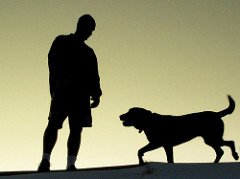 |  |
| help | owner | Canada |
 |  |  |
| jail | law | school |
 | 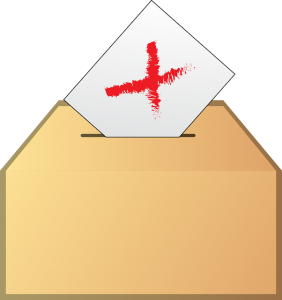 |  |
| restaurants | vote | daughter |
 | ||
| mother | ||
Put the above words in alphabetical order.
___________________________________________________________
___________________________________________________________
Make a sentence using one of the above words.
___________________________________________________________
___________________________________________________________
Word Skills
Word Patterns
The letters a, e, i, o, and u are vowels. Vowels can make a short sound or a long sound.
The short /o/ makes the /o/ sound like in octopus.

The long /o/ makes the /ō/ sound like in no.

The long /o/ sound can be spelled with the letters oa, ow, and o_e.
Practice reading these words.
| oa | ow | o_e |
| road | mow | hole |
| soap | low | joke |
| toast | blow | rose |
| coal | throw | robe |
| coat | bone | |
| boat | rope | |
| goat | rose |
Match each picture to a word from above.
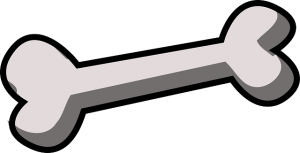 |  |  |
| 1. _______________ | 2. _______________ | 3. _______________ |
 |  |  |
| 4. _______________ | 5. _______________ | 6. _______________ |
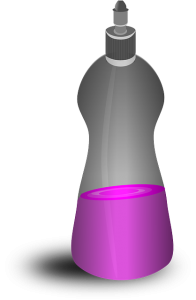 | 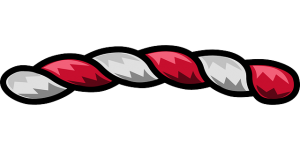 |  |
| 7. _______________ | 8. _______________ | 9. _______________ |
Read each sentence. Then cover it up. Try to write it. Use upper case letters correctly. Use periods and question marks correctly.
a. Throw the dog a bone.
_______________________________________________
b. Where did I put my coat?
_______________________________________________
c. Look out for the hole in the road.
_______________________________________________
d. I need to blow my nose.
_______________________________________________
e. Want to go on my boat?
_______________________________________________
You will see these words in the story. They all have the /ō/ sound, like no.
| own | owners | tomorrow | vote | wrote |
Use Your Reading Skills
Listen to Chapter 3. Then read Chapter 3 in BC Reads: Adult Literacy Fundamental English – Reader 2. When you see a word you do not know, ask yourself, “What word would make sense here?” Read on if you are not sure. Then go back and think about what word would make sense.
An audio element has been excluded from this version of the text. You can listen to it online here: opentextbc.ca/abealf2/?p=23
Check Your Understanding
1. Why was Charles Langston put in jail?
Charles Langston was put in jail because _________________________
_____________________________________________________
2. When did the USA make a law against having slaves?
The USA made a law against having slaves in _________________________
3. What did Charles set up for black people?
Charles set up ___________________________________________
4. What did Charles help black people win the right to do?
Charles helped black people win the right to _______________________
5. Fill in this family tree. Use Chapters 2 and 3.

6. Find a word in the poem that rhymes with say.
_____________________________________________________
7. Find a word in the poem that rhymes with dead.
_____________________________________________________
Read the poem again with a partner. Talk about these questions.
8. What does it mean to “let things take their course”?
9. Some people think the world will get better with time. Other people think the world will only get better if we work for change. Who do you think is right?
Writing
Grammar Rule
Always use an upper case letter at the beginning of a sentence.
This is the best song. – YES
this is the best song. – NO
Always use an upper case letter for the word I.
Where can I get the bus? – YES
Where can i get the bus? – NO
Use upper case letters where needed.
1. this soap smells good.
_______________________________________________
2. can i have some toast?
_______________________________________________
3. i will hang up your coat.
_______________________________________________
4. we went out on a boat.
_______________________________________________
5. they have a pet goat.
_______________________________________________
6. after dinner, i will mow the grass.
_______________________________________________
7. she can throw the ball far.
_______________________________________________
8. did you get a hole-in-one?
_______________________________________________
9. tell me a good joke.
_______________________________________________
10. thank you for the rose.
_______________________________________________
Writing Task
Complete these sentences to make a paragraph about your family.
- I was born in …
- I am (the oldest, the middle, the youngest, an only) child.
- I have … brothers and … sisters.
- I was raised by…
- My family is…
Remember:
– Use an upper case letter to begin each sentence.
– Use an upper case letter for the word I.
– End each sentence with a period or question mark.
– You may wish to type your paragraph on a computer.
Answer Key | |||||||||||||
| Picture Dictionary | |||||||||||||
| |||||||||||||
| Word Skills | |||||||||||||
| QUESTION | ANSWER | ||||||||||||
| 1 | bone | ||||||||||||
| 2 | toast | ||||||||||||
| 3 | goat | ||||||||||||
| 4 | blow | ||||||||||||
| 5 | coat | ||||||||||||
| 6 | rose | ||||||||||||
| 7 | soap | ||||||||||||
| 8 | rope | ||||||||||||
| 9 | throw | ||||||||||||
| Check Your Understanding | |||||||||||||
| QUESTION | ANSWER | ||||||||||||
| 1 | Charles Langston was put in jail because he helped slaves run away from their owners. | ||||||||||||
| 2 | The USA made a law against having slaves in 1865. | ||||||||||||
| 3 | Charles set up a school for black people. | ||||||||||||
| 4 | Charles helped black people win the right to vote. | ||||||||||||
| 5 | Langston’s Great-Grandmother: Lucy | ||||||||||||
| Langston’s Grandfather: Charles | |||||||||||||
| Langston’s Grandmother: Mary | |||||||||||||
| Langston’s Mother: Carrie | |||||||||||||
| 6 | day | ||||||||||||
| 7 | bread | ||||||||||||
| 8 | “Let things take their course” means to watch what happens, rather than act. | ||||||||||||
| 9 | Answers will vary. | ||||||||||||
| Writing | |||||||||||||
| QUESTION | ANSWER | ||||||||||||
| 1 | This soap smells good. | ||||||||||||
| 2 | Can I have some toast? | ||||||||||||
| 3 | I will hang up your coat. | ||||||||||||
| 4 | We went out on a boat. | ||||||||||||
| 5 | They have a pet goat. | ||||||||||||
| 6 | After dinner, I will mow the grass. | ||||||||||||
| 7 | She can throw the ball far. | ||||||||||||
| 8 | Did you get a hole-in-one? | ||||||||||||
| 9 | Tell me a good joke. | ||||||||||||
| 10 | Thank you for the rose. | ||||||||||||
Attributions
See the Attributions page near the end of this book.


